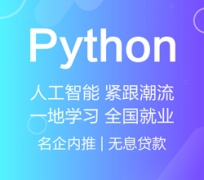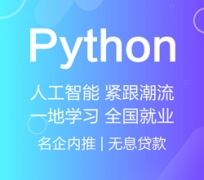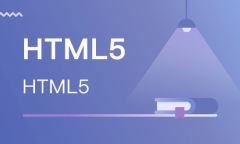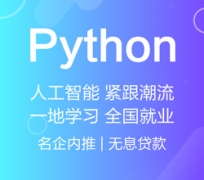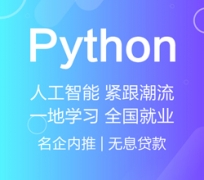Python中字符串的处理技巧有哪些?
1. 空格剥离

空格剥离是字符串处理的一种基本操作,可以使用lstrip()方法(左)剥离前导空格,使用rstrip()(右)方法对尾随空格进行剥离,以及使用strip()剥离前导和尾随空格。
s = ' This is a sentence with whitespace. \n'
print('Strip leading whitespace: {}'.format(s.lstrip()))print('Strip trailing whitespace: {}'.format(s.rstrip()))print('Strip all whitespace: {}'.format(s.strip()))Strip leading whitespace: This is a sentence with whitespace.
Strip trailing whitespace: This is a sentence with whitespace.Strip all whitespace: This is a sentence with whitespace.
对剥离除空格以外的字符感兴趣吗?同样的方法也很有用,可以通过传递想要剥离的字符来剥离字符。
s = 'This is a sentence with unwanted characters.AAAAAAAA'
print('Strip unwanted characters: {}'.format(s.rstrip('A')))
Strip unwanted characters: This is a sentence with unwanted characters.
必要时不要忘记检查字符串 format()文档。
format()文档:https://docs.python.org/3/library/stdtypes.html#str.format
2. 字符串拆分
利用Python中的 split() 方法可以轻易将字符串拆分成较小的子字符串列表。
split() 方法:https://docs.python.org/3/library/stdtypes.html#str.split
s = 'KDnuggets is a fantastic resource'
print(s.split())
['KDnuggets', 'is', 'a', 'fantastic', 'resource']
默认情况下,split()根据空格进行拆分,但同样也可以将其他字符序列传递给split()进行拆分。
s = 'these,words,are,separated,by,comma'print('\',\' separated split -> {}'.format(s.split(',')))
s = 'abacbdebfgbhhgbabddba'print('\'b\' separated split -> {}'.format(s.split('b')))
',' separated split -> ['these', 'words', 'are', 'separated', 'by', 'comma']'b' separated split -> ['a', 'ac', 'de', 'fg', 'hhg', 'a', 'dd', 'a']
3. 将列表元素合成字符串
需要实现上述操作的一个逆向操作?没问题,利用Python中的join()方法便可将列表中的元素合成一个字符串。
join()方法:https://docs.python.org/3/library/stdtypes.html#str.join
s = ['KDnuggets', 'is', 'a', 'fantastic', 'resource']
print(' '.join(s)
KDnuggets is a fantastic resource
事实果真如此!如果想将列表元素用空格以外的东西连接起来?这可能有点陌生,但也很容易实现。
s = ['Eleven', 'Mike', 'Dustin', 'Lucas', 'Will']
print(' and '.join(s))
Eleven and Mike and Dustin and Lucas and Will
4. 字符串反转
Python没有内置的字符串反转方法。但是,可以先将字符串看做是字符的列表,再利用反转列表元素的方式进行反转。
5. 大小写转换
利用upper(), lower(),和swapcase()方法可以进行大小写之间的转换。
upper()方法:https://docs.python.org/3/library/stdtypes.html#str.upperlower()方法:https://docs.python.org/3/library/stdtypes.html#str.lowerswapcase()方法:https://docs.python.org/3/library/stdtypes.html#str.swapcase
s = 'KDnuggets'
print('\'KDnuggets\' as uppercase: {}'.format(s.upper()))print('\'KDnuggets\' as lowercase: {}'.format(s.lower()))print('\'KDnuggets\' as swapped case: {}'.format(s.swapcase()))
'KDnuggets' as uppercase: KDNUGGETS'KDnuggets' as lowercase: kdnuggets'KDnuggets' as swapped case: kdNUGGETS
6. 检查是否有字符串成员
在Python中检查字符串成员的较简单方法是使用in运算符,语法与自然语言非常类似。
s1 = 'perpendicular's2 = 'pen's3 = 'pep'
print('\'pen\' in \'perpendicular\' -> {}'.format(s2 in s1))print('\'pep\' in \'perpendicular\' -> {}'.format(s3 in s1))
'pen' in 'perpendicular' -> True'pep' in 'perpendicular' -> False
如果对找到字符串中子字符串的位置更感兴趣(而不是简单地检查是否包含子字符串),则利用find()方法可能更为有效。
s = 'Does this string contain a substring?'print('\'string\' location -> {}'.format(s.find('string')))print('\'spring\' location -> {}'.format(s.find('spring')))
'string' location -> 10'spring' location -> -1
默认情况下,find()返回子字符串*一次出现的*一个字符的索引,如果找不到子字符串,则返回-1。对这一默认情况拿捏不准时,可以查阅一下相关文档。
7. 子字符串替换
找到子字符串之后,如果想替换这一子字符串,该怎么办?Python 中的replace()字符串方法将解决这一问题。
replace()字符串方法:https://docs.python.org/3/library/stdtypes.html#str.replace
s1 = 'The theory of data science is of the utmost importance.'s2 = 'practice'
print('The new sentence: {}'.format(s1.replace('theory', s2)))
The new sentence: The practice of data science is of the utmost importance.
如果同一个子字符串出现多次的话,利用计数参数这一选项,可以指定要进行连续替换的较大次数。
8. 组合多个列表的输出
如何以某种元素的方式将多个字符串列表组合在一起?利用zip()函数便没问题。
zip()函数:https://docs.python.org/3/library/functions.html#zip
countries = ['USA', 'Canada', 'UK', 'Australia']cities = ['Washington', 'Ottawa', 'London', 'Canberra']
for x, y in zip(countries, cities): print('The capital of {} is {}.'.format(x, y))
The capital of USA is Washington.The capital of Canada is Ottawa.The capital of UK is London.The capital of Australia is Canberra.
9. 同字母异序词检查
想检查一对字符串中,其中一个字符串是否是另一个字符串的同字母异序词?从算法上来讲,需要做的是对每个字符串中每个字母的出现次数进行计数,再检查二者计数值是否相等,直接使用collections模块的Counter类便可实现。
collections模块的Counter类:https://docs.python.org/3/library/collections.html#collections.Counter·
from collections import Counterdef is_anagram(s1, s2): return Counter(s1) == Counter(s2)
s1 = 'listen's2 = 'silent's3 = 'runner's4 = 'neuron'
print('\'listen\' is an anagram of \'silent\' -> {}'.format(is_anagram(s1, s2)))print('\'runner\' is an anagram of \'neuron\' -> {}'.format(is_anagram(s3, s4)))
·
'listen' an anagram of 'silent' -> True'runner' an anagram of 'neuron' -> False
10. 回文检查
如果想检查给定的单词是否是回文,怎么办?从算法上看,需要创建一个单词的反转,然后利用 == 运算符来检查这2个字符串(原始字符串和反向字符串)是否相等。
def is_palindrome(s): reverse = s[::-1] if (s == reverse): return True return False
s1 = 'racecar's2 = 'hippopotamus'
print('\'racecar\' a palindrome -> {}'.format(is_palindrome(s1)))print('\'hippopotamus\' a palindrome -> {}'.format(is_palindrome(s2)))
'racecar' is a palindrome -> True'hippopotamus' is a palindrome -> False
虽然掌握这些字符串处理“技巧”之后,并不意味着你已经成为了文本分析或自然语言处理,但这些技巧可能会激发出深入探究自然语言处理领域的兴趣,并掌握较终成为所*备的技能。

更多培训课程,学习资讯,课程优惠等学校信息,请进入 济南历下区Web培训济南市中区Python培训济南槐荫区Linux云计算培训 网站详细了解,免费咨询电话:400-998-6158



